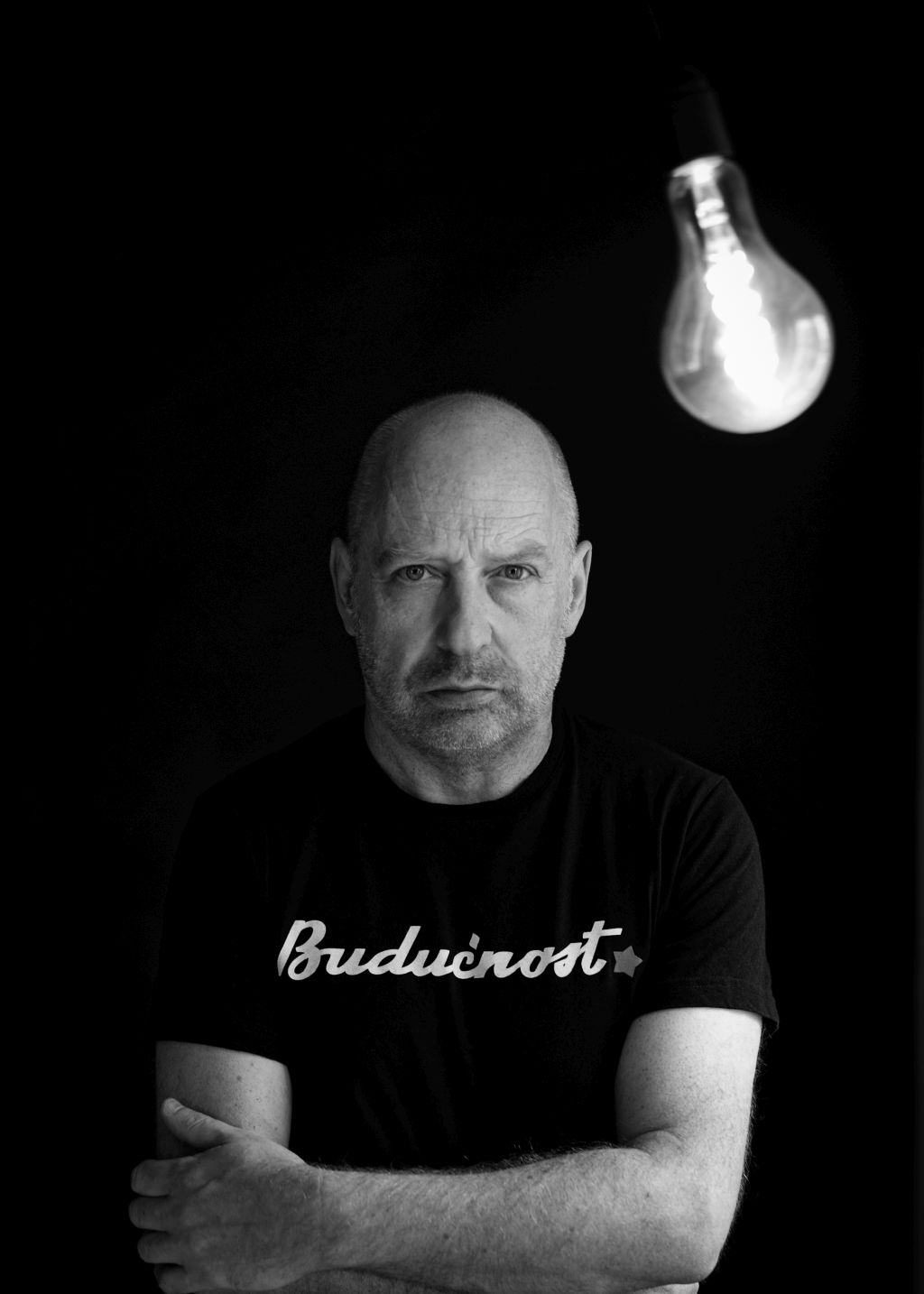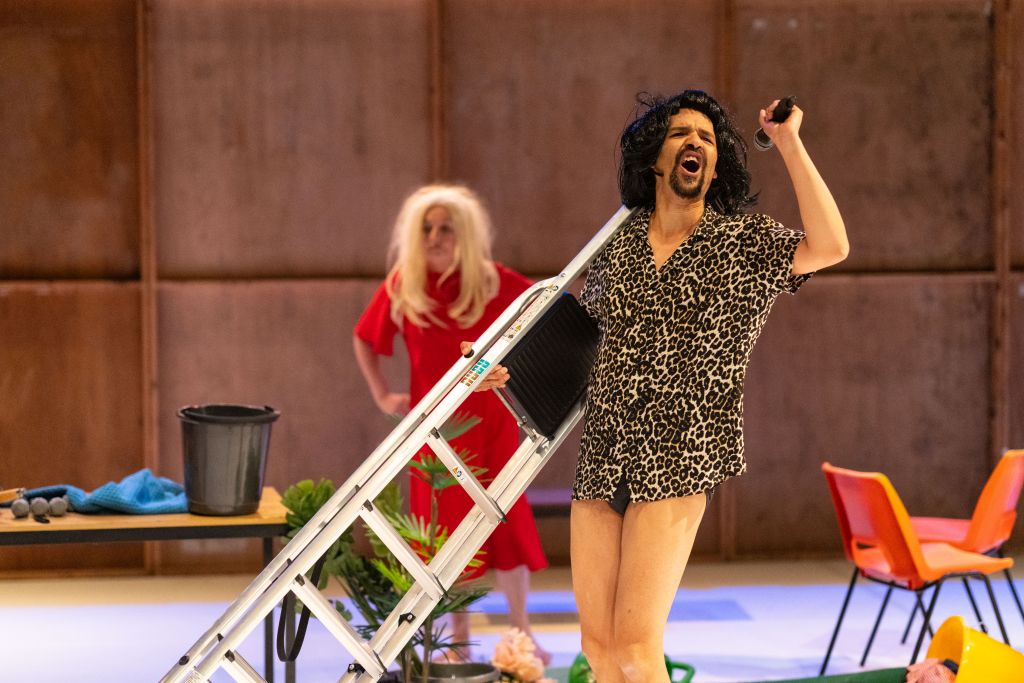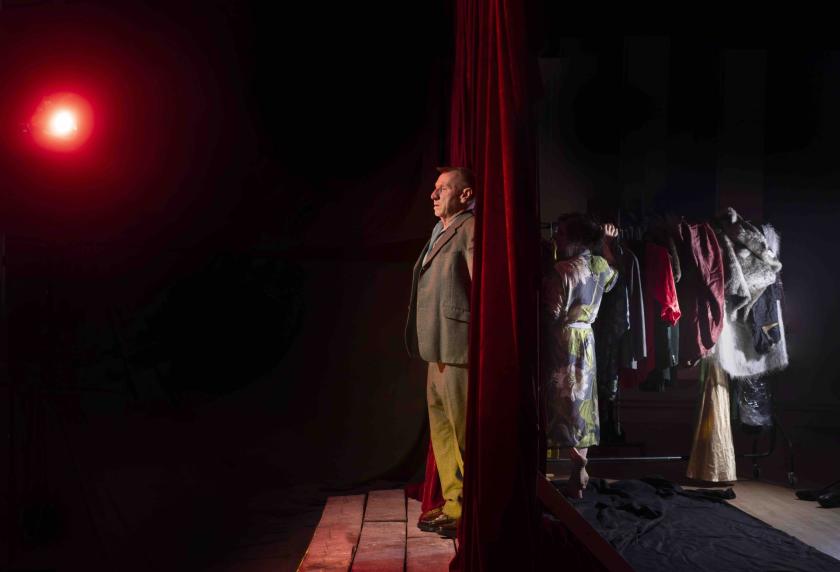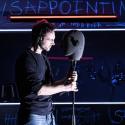Forced Entertainment is a theatre company based in Sheffield, touring original performances around the world. The core group of 6 artists has been working together for 40 years, often inviting others to collaborate on particular projects. From the outset we wanted to make a different kind of theatre, incoporating influence from music, cinema, visual art, stand-up and performance art as well as from experimental theatre. The idea was to make theatre to speak about the times in which we were living, in a language born out of those times. The shows vary: lots of talking or none, loud music or silence, video and large sets or just a bare stage. What they share is a playful, questioning attitude theatrical form.
Over this time, we've defined a pretty unique place in British and European theatre. Without narrative or characters as such, we make work focused on creating vivid images or atmospheres. We’re interested in breaking theatre and in remaking it at the same time. There’s usually a good dose of comical absurdity in there, too, as I hope audiences will find across our UK and European tour of our work, ending 7 December in France (Pictured below right: Tim Etchells, photo c. Amy Gibson)
 Prosaically speaking, 40 years of Forced Entertainment means four decades of carrying things out of the rehearsal room and loading them into the van! Packing to depart Sheffield for performances of our latest project Signal to Noise, we are going up and down stairs, trucking back and forth with sound equipment, costumes, boxes of props and rolls of dance floor. It’s cold, as usual. And also as usual, there’s a rhythm to the activity, albeit an irregular one – the varied pauses between our descents to the street and the waiting van necessitated by the awkward turn of the stairwell at the bottom. Folks kill time with chatter, or pass each other with a nod.
Prosaically speaking, 40 years of Forced Entertainment means four decades of carrying things out of the rehearsal room and loading them into the van! Packing to depart Sheffield for performances of our latest project Signal to Noise, we are going up and down stairs, trucking back and forth with sound equipment, costumes, boxes of props and rolls of dance floor. It’s cold, as usual. And also as usual, there’s a rhythm to the activity, albeit an irregular one – the varied pauses between our descents to the street and the waiting van necessitated by the awkward turn of the stairwell at the bottom. Folks kill time with chatter, or pass each other with a nod.
Another regular for us is the long silence: a frustrating rehearsal-room conversation will have ground to a halt. People will be looking at the floor, brains flitting around old topics in search of new ones. It could be that some folks are asleep, lullabied by circular discussion. This can go on for a while but eventually the spell of silence will get broken. Someone will say, “I was thinking that maybe…” or “What if…”. Somehow these tentative efforts will help unstick the stuckness, and onwards we go.
In this latest work, which premiered in March in Germany, we have found ourselves working, for the first time, with lip-sync. The texts in the piece are pre-recorded (spoken by AI voices) and the performers shift presences and energies, matching themselves to the voices, taking them on as if possessed by what's coming through the speakers. It’s a pretty unexpected move, but in another sense it’s quite typical – we like working with constraints, and there’s a perverse pleasure for us in tackling something so tricky.
As well as the silent side to our process, there’s a more joyous aspect, as well. Typically, when we’ve got stuck there’ll be a kind of breakthrough via improvisation. What recurs in these encounters is that people connect, and onstage material takes shape in ways that exceed our imaginations. On Signal to Noise we had a couple of charmed improvisations like this – the main one when we’d been struggling to make the ending of the show. We’d be around the houses for weeks, never solving the conclusion in a good way.
Then the improvisation I’m thinking of changed everything. The performers slowly assembled a line of chairs at the front of the stage and I was playing various sound loops, with multiple texts for them to lip-sync; no one knew what was coming really, they were just grabbing roles from the air, pretending they were speaking the texts even if they weren’t always sure of the words.
 The feeling in these moments is that things are coming together in a way that’s beyond us. On the outside, watching from the sound desk, I feel nervous as we hit our stride. Like the performers, I’m calculating possible moves in the game that’s emerging - trying to decide when or if I should intervene, calling to one of the performers or changing the music. Any move I make can shift the path of what’s happening but it can also crash the scene that's unfolding, breaking the flow. In the improvisation for the last part of Signal to Noise, I took a chance to accelerate things, using a new voice recording that I’d sped up slightly, a female voice that seemed angry, ranting, on the edge of incoherence. The voice got picked up immediately and the performers grabbed the moment perfectly – lots of energy, doubling down on the chaos and pushing the sound.
The feeling in these moments is that things are coming together in a way that’s beyond us. On the outside, watching from the sound desk, I feel nervous as we hit our stride. Like the performers, I’m calculating possible moves in the game that’s emerging - trying to decide when or if I should intervene, calling to one of the performers or changing the music. Any move I make can shift the path of what’s happening but it can also crash the scene that's unfolding, breaking the flow. In the improvisation for the last part of Signal to Noise, I took a chance to accelerate things, using a new voice recording that I’d sped up slightly, a female voice that seemed angry, ranting, on the edge of incoherence. The voice got picked up immediately and the performers grabbed the moment perfectly – lots of energy, doubling down on the chaos and pushing the sound.
A further vivid recurrence in our work is the ongoing moment of calm before the first member of the audience comes in. The performers have disappeared backstage and we’re waiting in anticipation of the ride that’s about to begin. That, more than anything, may be what has kept us working together so long, and I look forward to experiencing it afresh on the South Bank this week.















Add comment